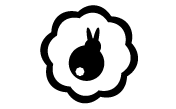Having gotten terribly behind in book reviews, we must start the new year by catching up. Let’s start with a trip back in time to the land of ancient Egypt, with Ancient Egypt in Lace and Color, by Anna Dalvi (Cooperative Press 2012).
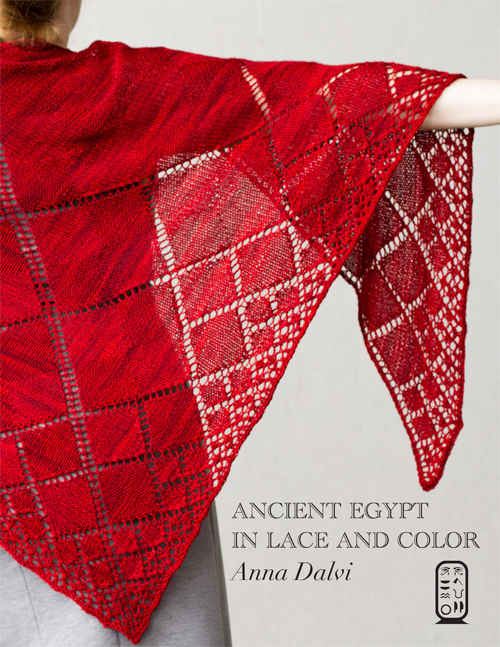
When I was in elementary school, I went through a phase where I was fascinated with ancient Egypt. We learned about the excavation of Tutankhamen’s tomb in school (now that I think about it, it may have coincided with the round of artifact tours that began in 1972) and I began reading more about it on my own. One year I even dressed up as Cleopatra for Halloween; with a brown acrylic yarn wig and dress fashioned from an old sheet, let’s just say it wasn’t one of my most successful costumes. Obviously I’m not the only one who finds ancient Egypt fascinating; Swedish-Canadian designer Anna Dalvi chose ancient Egypt as the unifying theme for her latest book of lace shawls. Dalvi notes:
In ancient Egypt, color was a very important part of the arts and life. Iwen, the ancient Egyptian name for color, could also mean appearance, character, being, or nature. So the use of color in arts and myths had great symbolic significance. An object’s or person’s color would give a clue to its nature.
Dalvi researched the symbolic meanings of the six colors used in ancient Egypt–green, red, white, black, yellow and blue–and delved into Egyptian myths tied into those symbolic meanings. For example, the god Osiris was often depicted with green skin. According to myth, Osiris’s brother killed him and broke the body into fourteen pieces, one for each of the full moons in a year. One of the pieces was later turned into a fish. Dalvi cleverly uses the story as jumping-off point, creating a shawl with thirteen full moons and one fish.
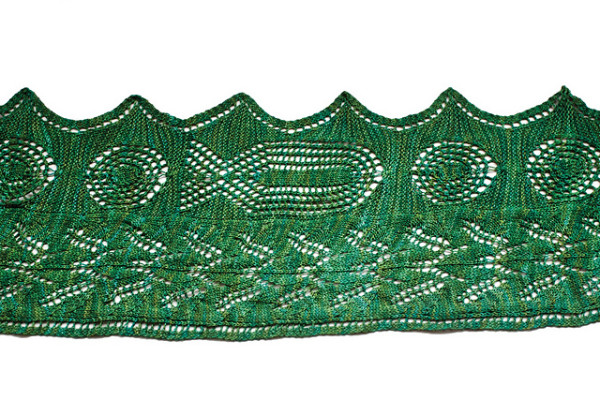
A full-length view of the Osiris shawl:
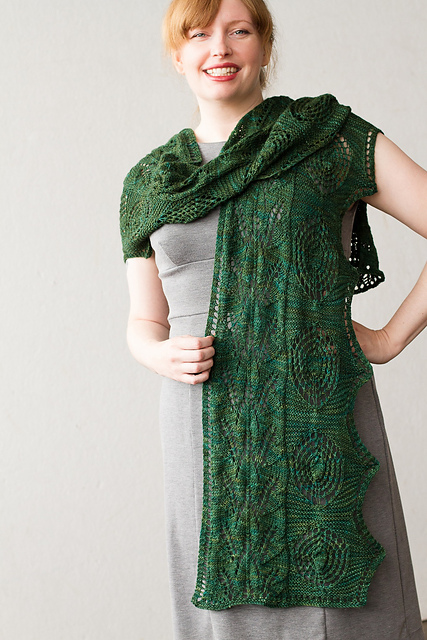
You’ll find eleven other lace patterns in the book, each using a color and/or myth drawn from ancient Egypt as inspiration. Each pattern is prefaced by a description of the story and color that inspired it.
All the shawls are lovely, but my particular favorites include the circular Ra and Apep shawl (inspired by the golden disk representing the sun carried across the sky each night by the god Ra):
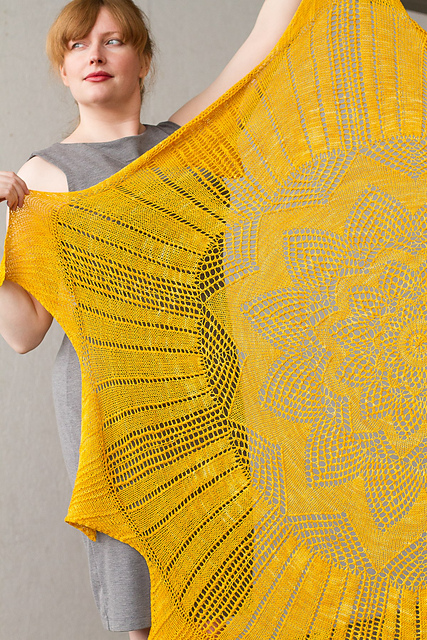
Nefertari, inspired by a well-known Egyptian queen:
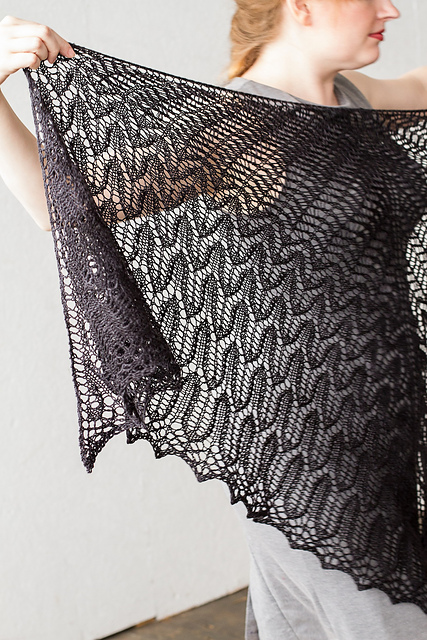
and the geometric Seth (also shown on the cover):
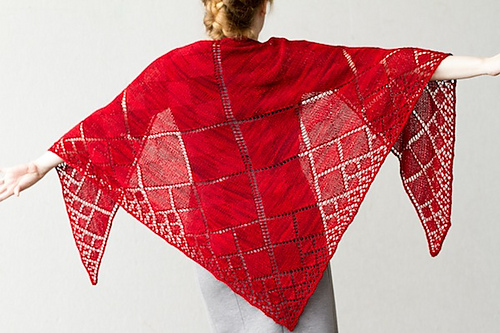
The majority of the shawls (approximately 8 to 9) are knit in laceweight yarns, with a few in fingering/sock yarns. Of course, one of the nice things about shawls is that so long as you are flexible about finished size, you can use other gauges of yarn, in this case ending up with a larger finished product. Likewise, most of the shawls come in a single size only, but shawls truly are a one-size-fits-all accessory, so no worries about sizing or fit.
In terms of shape, about four of the shawls are circular (one of which has a neck opening for draping):
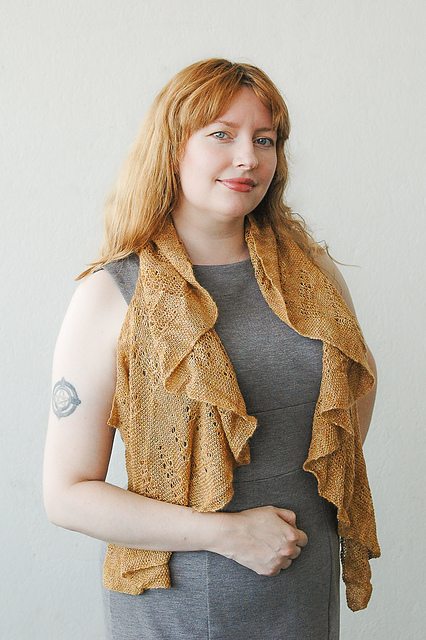
one, the Osiris stole, is rectangular; about three are triangular; two heart-shaped; one is a half-octagon;
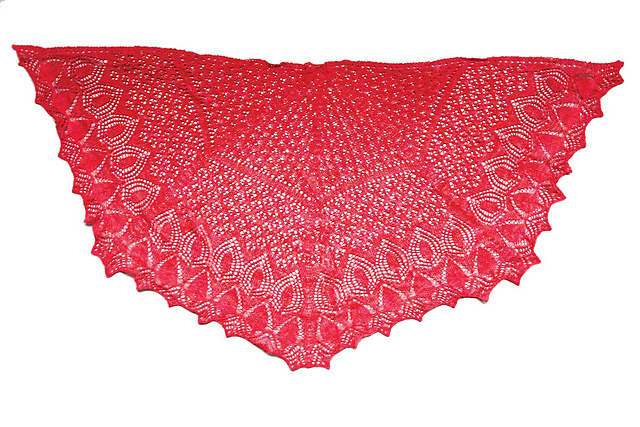
and one is a crescent shape. I really like the variety in the styles of shawl, from geometric to lace, in different shapes, some all-over patterning and others with lace at the edges. The solid and semisolid yarns in vivid colors are eye-catching and keep the attention where it belongs, on the intricate stitchwork.
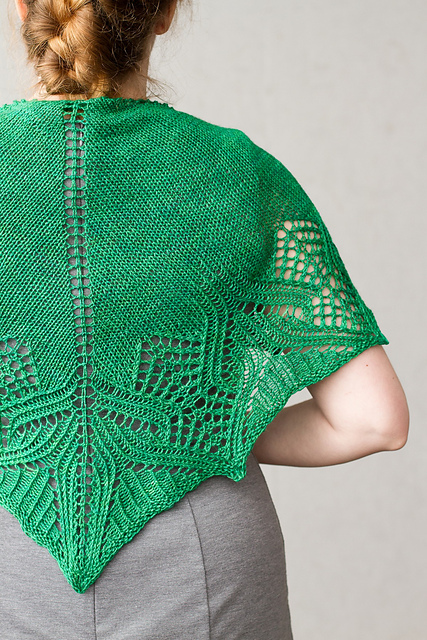
The patterns are charted and do not include line-by-line directions, as is customary with lace. While I hate to discourage anyone from trying a pattern they would really like to make, these do appear to be for knitters with some previous lace experience, particular the larger pieces with all-over patterning. I especially like the fact that the shawls are photographed flat, so that the knitter can see how they are constructed, and on a model, so the knitter can get a feel for how they’ll drape. Kudos to Caro Sheridan and Anna Dalvi for the photography, which shows off the lovely lace to great effect.
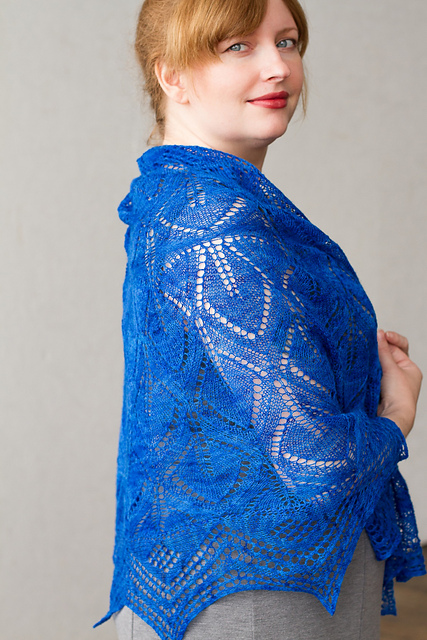
I am always fascinated by the creative process, the various things–whether a color, a motif in nature, a piece of art or bar of music, or, yes, an ancient Egyptian goddess–that influence artists to create. It’s fun to see how ancient Egyptian myths and color symbolism were the inspiration for this beautiful collection of shawls. You can purchase Ancient Egypt in Lace and Color from Cooperative Press through the link at the top of the post in digital (PDF) format for $16.95, or get PDF plus paperback for $26.95.
